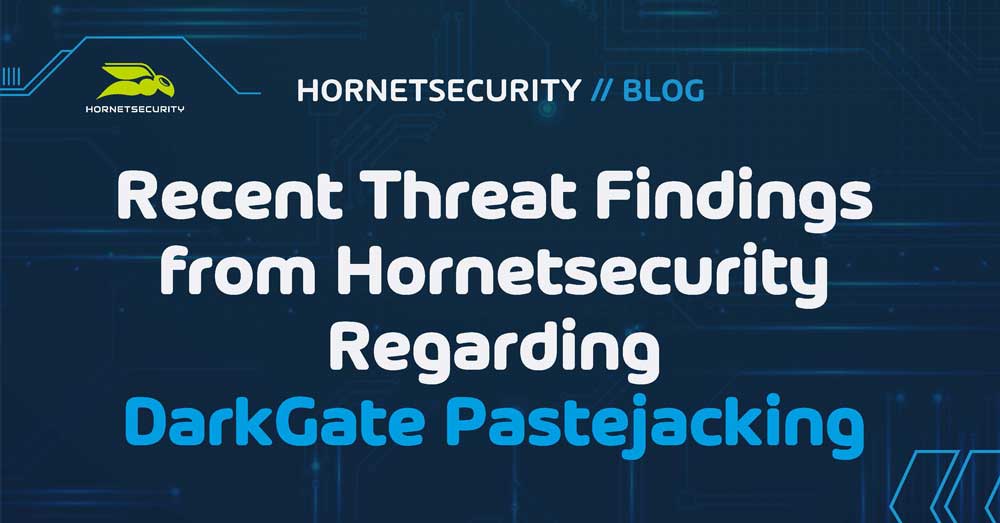What is Pharming? Common Pharming Types & How to Protect Against Them
Adrien Gendre
—February 02, 2023
—3 min read

Phishing, including pharming, targeted more than 300,000 individuals in 2021, which is nearly four times any other type of cyberattack. When a pharming attack is carried out successfully, the fallout can be catastrophic. One of the most prominent examples of pharming occurred in 2007, when 50 financial institutions in the U.S., Europe, and Asia fell victim to a pharming attack. It lasted for three days and infected more than 1,000 desktops per day. It also resulted in major financial and reputational damage for the banks involved.
Understanding the basics of pharming and how this attack occurs is a critical first step in fortifying your cybersecurity defenses. Let’s dive deeper into the various types of pharming and how to protect against them.
What is pharming?
Considered to be a more advanced type of phishing attack, pharming redirects individuals to a malicious website without their knowledge. Once there, individuals divulge sensitive information that hackers can use to exploit them.

Pharming & phishing: how are they different?
While pharming shares many similarities with phishing attacks, the two also present important differences. Understanding them is important to better protect your organization and clients.
Phishing is when a threat actor impersonates a well-known and established brand and attempts to lure victims into taking a compromising action, such as divulging sensitive information or downloading a malware-laden attachment. Relying on email as its attack vector, phishing is the most common type of cyberattack and can result in wide-scale data breaches and serious financial losses.
Pharming skips the step of making direct contact with a victim and instead manipulates Internet traffic to redirect the individual to a malicious website where they’re encouraged to divulge sensitive information for harvesting. Today, organizations are investing significantly in phishing awareness training to prevent possible exploitation. Unfortnately, there is less awareness around pharming attacks and the attack technique of redirecting users to malicious websites.
The two main forms of pharming
When it comes to pharming, there are two primary methods threat actors utilize.
Pharming malware
Pharming malware is used by threat actors to infect an individual’s computer and tamper with their host files. Typically spread through malicious emails, pharming malware redirects users away from legitimate websites toward malicious ones.
By infecting the individual’s local host files, the malware can adjust their DNS servers so that when certain domain names are entered, the individual is pointed instead to the fake website.
Pharming malware is typically downloaded onto a user’s computer through a malicious link, often through trojans or email spoofing. Even after the malware has been detected and deleted from an individual’s computer, users can still be redirected to malicious websites due to DNS caching.
DNS spoofing
Like pharming malware, DNS spoofing is a nefarious type of cyberattack. While pharming malware relies on an individual clicking a malicious link to open the door for identity fraud, DNS spoofing can lead to identity fraud without any sort of malware.
In this type of cyberattack, threat actors alter the DNS table in a server to redirect traffic to malicious websites. When successful, a compromised DNS server can redirect a high volume of Internet traffic without the knowledge or control of the affected users.
Even though DNS spoofing attacks typically target large companies managing DNS servers, these threats can also affect your home Internet router. If someone on your local network goes to a nefarious link, that domain name is stored in your DNS cache. In turn, your personal device can be infected.
How to prevent pharming
A proactive approach to cybersecurity is crucial to avoid lasting consequences for your business, including those that accompany data breaches and compromised servers. Here are a few ways your organization can protect against pharming attacks.

Educate employees on suspicious links
Educating your employees on the basics of pharming can make all the difference in keeping your teams and their sensitive information protected. You should you cover not only the basics of pharming but also how hackers typically carry out these attacks. This will help ensure team members are examining external links before clicking them and reviewing the destination path for any hyperlinked text. To further empower your employees to avoid malicious links and downloadable viruses, consider enrolling them in a phishing awareness training program.
Keep an eye on URLs
URLs have long been associated with email-based attacks. That’s why employees should inspect domain URLs both in email and when they visit a website. Domains that begin with “https” typically signify websites that use the secure communication protocol to encrypt data and protect users, but keep in mind that sophisticated phishing sites also use https.
Invest in AI-threat detection and response
Pharming attacks are becoming increasingly sophisticated. As they evolve over time, it’s important to implement solutions that enable you to optimize your security measures accordingly. With the help of AI-threat detection and response tools, your organization can better analyze, detect, and remedy pharming threats in a fraction of the time.
These solutions help protect against the initial compromise that can come through a malware-laden email and, in turn, lead to a pharming attack. They also protect against future cyberattacks in the event sensitive data is harvested via a malicious website. Not only do AI-threat detection and response solutions help expedite and streamline time-consuming IT responsibilities, but they also put in place a full-proof defense against hard-to-detect threats.
Take a preventative approach to pharming protection
Like other cyberthreats, pharming can lead to long-term consequences for your organization. That’s why it’s important to act now to limit your chances of falling victim to a pharming attack in the future. With the right combination of education, technologies, and support, your organization can protect your employees and sensitive information from compromise.




